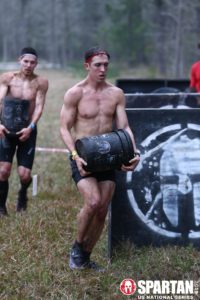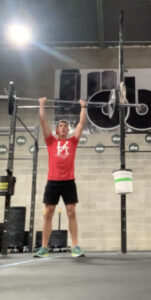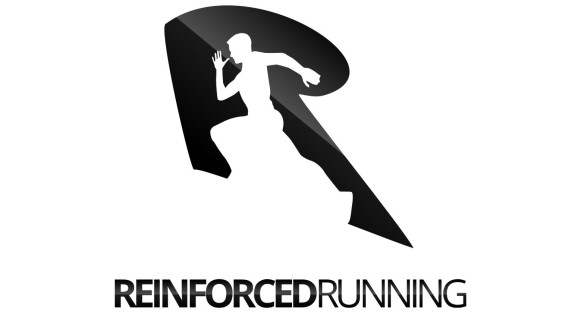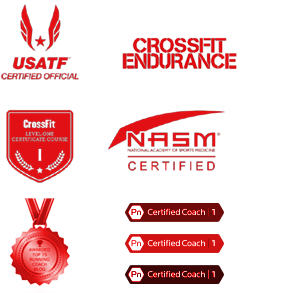How to take your Strength Training for Spartan Race to the Next level.
The biggest challenge in strength training for a Spartan Race is how to spend your time wisely. There are many

elements and one that can not be overlooked is strength training for a spartan race.
As a professional endurance and strength coach, I have spent several years determining the best ways to help athletes how to correctly use strength training for Spartan Race.
This article will find the best principles and workouts to help take your performance to the next level.
Learn More about our Custom one-on-one OCR Coaching Here
Use Strength Training for Spartan race to always be ready.
Periodized and progression are the lynchpins of most strength training plans. Any coach worth their salt will be able to create a program to progressively overload and force adaptations to your system.
Typically progression would look like adding sets, reps, and weight or reducing recovery. Changing these variations will all force demands on your body so that you can reach a new level or
When to use periodization in strength training for Spartan Race.
When training for a Spartan Race or any obstacle course race, you don’t need to rely on strict periodization to improve your performance.
The only case where you will need a progression is to reduce limiters in your strength to stop you from completing an obstacle or to gain a foundation of strength.
Consider a linear progression if you can not complete a given obstacle when you are entirely fresh. If you can’t pull yourself over a wall or if you can’t lift the tire off the ground.
Besides the above example, most of the strength demands for Obstacle course racing and Spartan race will be needed under fatigue. Your absolute strength might not help on the monkey bars after you have run up a mountain.
Plus, the relative strength needed for most Spartan race obstacles is pretty low. You may already have the required strength to pass all of the obstacles when feeling fresh.
Chances are that you won’t be fresh going into pretty much every single obstacle.
But once you reach that level, you need to practice the application.
Important Note
**Training for OCR is not training for Crossfit**
Many principles and workout structures will look similar to any given CrossFit WOD. But the demands of an OCR event are much different than those in a CrossFit class.
The CrossFit methodology is constantly varied to be prepared for the unknown.
This is an excellent methodology to follow for your general fitness. Some gyms even might prepare you for something like the CrossFit open.
But as an OCR athlete, you will waste a lot of time and valuable energy if you make CrossFit your primary training method.
Below are my critical principles of strength training for a spartan race.
Use Strength Training to Practicing Breathing.
Some strength movements can be specific for obstacle course racing – exercises like dead hangs and pull-ups, monkey bars, and tire flips.
Other exercises don’t make as much intuitive sense. Heavy snatches and clean and jerks are fun but won’t move the race-specific needle.
Then, other movements straddle the line of what makes intuitive sense and what could seem like a waste of time. But these movements can be critical to help your improvement on the course.
The purpose of these exercises is to help establish a breathing pattern when working hard and under load. During an OCR event, you will find yourself under load or have your breathing challenged when going through a carry or through a taxing obstacle.
Coming off of something like Twister should not be that exhausting. If you were to do the obstacle fresh, you would probably take a small breath and be fine. But after a mountain climb, things change.
Focusing on your breathing can shift your rate of exertion to cause shortness of breath. This discomfort and can lead to over-breathing or a shift in mental and physical fatigue.
Using movements to load your skeletal system and compress your diaphragm helps maintain a better breathing pattern when entering and exiting an obstacle.
These movements should be done under fatigue to help you practice breathing through your transitions.

Thrusters will help training breathing patterns for a Spartan Race
These movements can most commonly be incorporated through metabolic conditioning (metcons) with things like AMRAPs or workouts for time.
Workout Examples
Ex 1)
12 min AMRAP (as many rounds as possible)
- 12 Thrusters
- 10 Burpees
- 8 Pull-up
Ex 2)
5 Rounds for Time
- 250 M Row
- 15 Sandbag Front Squats
- 10 Burpee over Sandbag
Focus on breathing slowly during these movements. Too often, we will find ourselves moving our breathing with movements. If we are going fast, we breathe fast. Work to fight the sensation and breathe slow and easy to ensure you are giving the air enough time to assimilate into your system.
Learn more about Strength Coaching for the OCR athlete for $19 per month.
Carry strength will save time.
Outside of running, carries are where you spend the most time in a Spartan Race. A carry can make or break your placement in a race, so you need to move well through these workouts.
The best way to get better at your carry is to carry heavy things. Seems simple enough. However, the problem with heavy carry workouts is they are hard to recover from.
It’s not always wise to do a super long carry during your workout.
Yes, it will help with your mental ability to suck it up and lean into the pain, but we want to get better at carrying things fast.
You can use the gym to get strong at carries. Add specific movements that will target your core, lower back, and arms. Many carry specific strong man movements that will help with your ability to pick up and move things through space.
Strong man and odd object training:
- Front Loaded Sandbag Carry
- Front Loaded Sandbag squats
- Farmers Walk
- Front Rack Walk
- Mixed Grip Suitcase walk
- Yoke Carry
- Overhead Carry
- Zercher Carry
Work Carries Under Fatigue
To get good at carries you will need to practice using the above movements under fatigue. Have specific workouts to help you move through transitions. See the following workouts as examples.
Carry Specific Gym Workouts:
Ex. 1)
5 Rounds
15 Burpees over DB
60 second Farmers walk
- rest 60 seconds
Ex. 2)
4 Rounds
- 1-minute Farmers Walk
- 1-minute Burpees
- 1-minute Front Rack Carry
- 1-minute Jump Squats
If you are looking for a race-specific carry workout check out this video
Another way to help your carry strength is to improve your relative strength using loaded compound movements.
How to get strong with compound movements.
For strength training in your carries, there are a few movements that you can focus on to help your relative strength. For the most part, the weight is not that heavy, and almost everyone can pick it up and move with it – but the lighter we can make it feel, the faster you will be able to go. The bottom line is getting strong matters.
Compound movements will give you the most bang for your buck when it comes to power production and relative strength.
Compound movements are as follows:
- Squat
- Deadlift
- Lunges
- Overhead Press
When working on your maximum power and strength production, you want to lift as heavy as possible with good form and keep the reps under 5.
4 x 2 @ 88% of max
3 x 3 @ 85% of max
5 x 2 @ 90% of max
To maximize y our strength efforts, do these workouts in the early stages of your gym strength sessions so you will be the least amount fatigued.
Learn more about Strength Coaching for the OCR athlete for $19 per month.
Workouts to simulate a carry while racing.
Ultimately the goal is to improve your carries to race better. So from time to time, you need to practice carrying things while fatigued.
Below is a basic example of a workout you can do without lugging a sandbag or bucket with you on your run.
5 Rounds
- 15 Burpees over DB
- 60 second Farmers walk
- rest 60 seconds
These workouts will help you learn to move through transitions. Pick up that odd object and start moving with it.
Strenght for running
Strength training is important for power production and injury prevention. There come specific needs for endurance athletes to cover their bases to get the most out of their running.
As a runner, you will want to lift heavy to create more muscle activation and power. Keeping the weights high and the reps low will ensure you are getting strong without adding size (side note – to add the size, you need to eat, and you need to eat a lot. It’s not that easy to get jacked).
Training for OCR will cover much of the required strength needed as a runner. But adding in a few specifics for runners will go a long way.
Stability and tempo
Working at a slower pace will ensure that you are strong in every position. Going slow down and slowly back up will also create a higher effort without the use of heavyweight. Tempo squats, RDLs, and splits squats are great moves to add stability to your run. A tempo workout will look as follows.
Split Squat – 4/0/4/0
The number sequence is in order of the direction of the movement. Lowering/bottom/rising/top. So the above (4/0/4/0) would mean a 4 second lower, zero-second pause at the bottom, 4 seconds to return to standing, zero-second pause at the top.
You can also pause at the top and bottom to add more stress to your breathing and improve your stability. 2/2/2/2 patterns work very well.
Every so often to check your bases on your positional control and strength.
Plyometrics and force generation.
To create a powerful stride, you must train with power, which means lifting heavy with proper form and moving explosively.
You should complete plyometrics and power lifts with small volume and high intensity. The goal is to generate as much force and power as possible. Not to tax your muscles to the point of fatigue – which is a challenge for runners.
It’s intuitive to think you need to train until you are fatigued to become fatigued resistant. But my training with plyometrics and power will decrease the amount of energy you need with each stride.
Approach the problem for both sides of the equations by adding low dose intensity with your Strength training with the high doses of volume with endurance training.
Power Movements
- Jump Squats
- Kettle Bell Swings
- Push Press
- Thrusters
- Broad Jumps
- Single leg broad jumps
- Power drills
- A-skips
- B- skips
- HIll Bounds
- Power Skips
- Hill Sprints
Build Grip Strength that works.
Grip strength is a massive limiter to many OCR athletes. If you don’t have the required strength to get through the monkey bars or twister, you need to do grip work.
A common mistake I see is athletes doing dead-hangs for as long as possible. In practicality, your dead hang does very little for your grip during a race.
Train your grip for absolute strength, not for endurance.
Absolute strength is the maximum amount of force an athlete can express.
Creating a higher level of force will give you strength reserves as you move through the obstacles with less effort. To build absolute grip strength, you need to work at high intensity with low volume — the opposite of dead hangs.
You can add intensity in two ways. Adding weight or reducing ledge size (think of a hang board)
Get some ideas here
Absolute Grip Strength Training
MaxHangs protocol
Pick a weight or a lege that will be very difficult for 13-15 seconds.
- Hang with weight for 10 seconds
- Rest for 3 minutes
- Repeat 3-5 times
Repeat the above twice per week with at least two days of rest between sessions. Progress this protocol by
Here is a study from one of climbing’s top researchers
Once you have worked on absolute power for several weeks, you can replace your training with some power endurance with the 7/3 repeaters.
Power Endurance
7/3 repeater
Pick a moderate to lightweight or a moderately hard ledge and complete the following.
6 Rounds
- 7-second hang
- 3-second rest
- Each set should take 1 minute.
- Rest 2-3 minutes and repeat for 2-4 sets.
There is less need for grip “endurance” because power endurance will help you overcome multiple grip obstacles in succession.
Our idea of grip strength needs to change to get better results.
Once you get close to an event, it will help you try to get on some obstacles to help with the movement practice.
You will often find success in these obstacles by practicing movements and spending time on the course during and after the races. Ensure you take the time to create an appropriate strategy for when you enter a grip-related obstacle.
Here is a podcast with pro climber and Coach Charlie Schrieber.
How much strength do you really need?
The amount of strength that you need to OCR is relatively low. And if you have met that threshold, you do not need to spend a ton of time on strength training to get stronger. Most athletes can get away with two sessions per week.
I recommend the third session if you are preparing for a short course event like Hyrox, stadium race, or any TMX style race that might pop up. A third day is also helpful in the offseason.
Don’t go overboard with strength training. Ultimately, it would help if you were strong, but there is only so much training time in the day. Your endurance training is still a top priority, so do not replace your endurance with gym sessions.
Creating a Strength Workout for Spartan Race
Okay, so how does all this work?
Let’s take all the info from above and put it in one place.
(If you want this just paid out for you, you can join the strength training coaching or purchase a one-time training plan here.) strength training for Spartan Race
(Or get a 2 – weeks aka two weeks of free workouts delivered to your inbox here)
But you’ve read this far – so let’s talk about how it looks on a specific day.
Strength training for running and OCR will never be detrimental. The only time the strength work will work against you is to opt for a strength session over your endurance training.
We are training for an endurance endeavor, so we need to do endurance work. All the strength work in the world won’t help your endurance. strength training for Spartan Race
So I suggest you do a strength workout 2-3 days a week not to hinder your endurance training.
I would suggest doing strength workouts the day before a hard run effort or two days following a hard effort. If you are doing more than two hard interval running steps a week, then you should probably do less of them and recover more – but that’s a different post altogether. strength training for Spartan Race
If you are new to strength training, you will be sore. It’s a reality you must live with, but it will get easier over time. Don’t let short-term soreness deter your long-term gains.
So for the sake of this article, let’s assume you have three days a week to train. Let’s call these days Monday, Wednesday, and Friday. strength training for Spartan Race
Split up the days to have a different focus.
Monday: Grip Focus
Wednesday: Carry Focus
Friday: Grip and Power
The workout stimulus will change based on the progression. For this example, we are going to be talking about absolute power in the grip. strength training for Spartan Race
Workout example
Warm-up (10 mins)
- Diaphram Stretch
- 10 reps Thoracic Med Mobility
- 30 reps Lying Med Bal Twist
- 10 reps Inch Worms
- 10 Reps Walking Hamstring Stretch
- 10 Reps Jumping Squats
- 10 reps Scap Pull-ups
- 10 reps Band pull parts strength training for Spartan Race
Grip Power and Core stability superset (10-12 mins)
Four sets
- MaxHangs
- Paloff Press x 8 strength training for Spartan Race
Rest 2-3 mins
Power and strength (12 minutes)
EMOTM for 12 minutes
- 5 Back Lunges (heavy)
- 3 Pause Front Squats strength training for Spartan Race
Grip Metcon (15 mins)
15 min AMRAP (as many rounds/reps as possible)
Ascending Ladder
3,6,9,12 etc
- Pull-ups
- Kettlebell Swings
- Toes to Bar
- Goblet Thrusters strength training for Spartan Race
Core EMOTM 9 mins
40 seconds of work: 20 seconds rest
- Min 1: Hollow Rocks
- Min 2: Flutter Kicks
- Min 3: Mountain Climbers
This workout will probably take you 60 to 70 minutes with set up and rest. strength training for Spartan Race
I’ve found this format is the best way to get the necessary work in a logical non-linear progression. The Metcon is up for grabs when it comes to progression and remembers you want to work on breathing and transitions with this as part of your strength. Getting strong is great, but using it will matter more in the long term.

